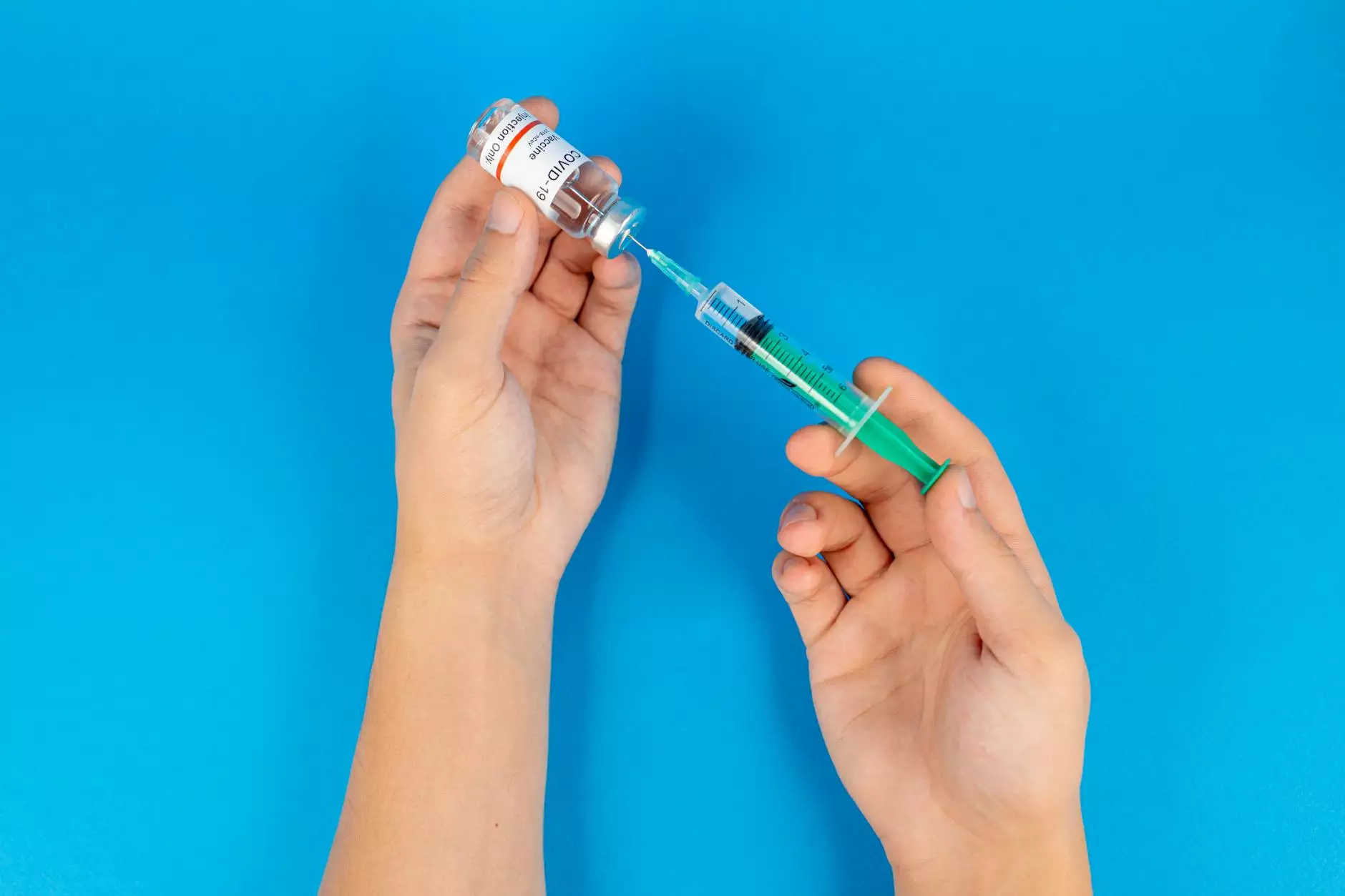Mastering the Art of Self-Administering a Semaglutide Injection: The Ultimate Guide for Weight Management and Diabetes Care

In today’s rapidly evolving healthcare landscape, innovative treatments like semaglutide have transformed the approach to managing obesity and type 2 diabetes. As more patients become interested in self-administered injections, understanding the meticulous process for how to give yourself a semaglutide injection safely and effectively has never been more important. Whether you're a novice or seeking a refresher, this comprehensive guide aims to empower you with detailed knowledge, practical tips, and confidence to manage your health with precision.
Understanding Semaglutide: The Foundation for Self-Administration
Semaglutide is a glucagon-like peptide-1 (GLP-1) receptor agonist that helps regulate blood sugar levels and suppress appetite, making it an excellent option for weight loss and diabetes management. Administered via subcutaneous injection, it mimics naturally occurring hormones to enhance insulin secretion while inhibiting glucagon release, ultimately leading to improved glycemic control.
Self-injection of semaglutide offers convenience, flexibility, and autonomy, but requires meticulous attention to technique and hygiene. Knowledge is power, so understanding the mechanism of action, storage requirements, and proper disposal of supplies is essential.
Preparing for Your Semaglutide Self-Injection: Essential Steps for Success
Gathering the Necessary Supplies
- Semaglutide Pen or Vial: Ensure you have the correct dosage prescribed by your healthcare provider.
- Alcohol Swabs: For disinfecting the injection site and your hands.
- Sharps Disposal Container: A puncture-proof container to discard used needles safely.
- Gloves (optional): For added hygiene, especially if you are prone to skin infections.
- Clean Running Water and Soap: To wash your hands thoroughly before injection.
Storage and Handling
Semaglutide should be stored in the refrigerator at 2°C to 8°C (36°F to 46°F). Do not freeze the medication. Prior to use, allow the pen or vial to reach room temperature, typically 30 minutes, to ensure a comfortable injection experience. Always check the medication for discoloration or particles—discard if abnormal.
Step-by-Step Guide on How to Give Yourself a Semaglutide Injection
1. Wash Your Hands Thoroughly
Begin by washing your hands with warm water and antimicrobial soap for at least 20 seconds. Proper hand hygiene minimizes the risk of infection during self-injection.
2. Prepare Your Injection Site
Select an injection site, typically the abdomen, thigh, or upper arm. Rotate sites to prevent tissue damage and ensure optimal absorption. Clean the area with an alcohol swab and let it air dry completely.
3. Prepare the Semaglutide Pen or Vial
Using the Pen
- Remove the pen cap and check the suspension to ensure it is homogeneous; roll the pen between your hands if it appears cloudy to mix the medication evenly.
- Detach the protective needle cap, but do not twist or remove the needle until ready to inject.
Using the Vial
- Draw air into a syringe equal to your prescribed dose.
- Insert the needle into the vial's rubber stopper, inject air, and then draw the prescribed dose with steady pressure.
- Remove any air bubbles by tapping the syringe and pushing the plunger slightly to expel excess air.
4. Administer the Injection
- Pinch a fold of skin at the prepared site, forming a small mound.
- Insert the needle at a 45 to 90-degree angle, depending on the needle length and subcutaneous fat.
- Inject slowly and steadily to minimize discomfort.
- Withdraw the needle at the same angle and release the skin.
5. Post-Injection Care
Apply gentle pressure to the injection site with a clean cotton ball or gauze if bleeding occurs. Do not rub or massage the area, as this can cause irritation or affect absorption. Dispose of the needle immediately into your sharps container and wash your hands again.
Safety Tips and Best Practices for Self-Injection of Semaglutide
- Sterility is crucial: Always use a new, sterile needle for each injection.
- Maintain proper storage: Keep medications refrigerated and only allow them to reach room temperature prior to use.
- Follow your healthcare provider’s instructions: Adhere strictly to prescribed dosages and injection schedules.
- Keep a diary: Record injections, doses, and any side effects to monitor your progress and inform your healthcare provider.
- Stay alert for adverse reactions: Be aware of symptoms like nausea, vomiting, abdominal pain, or allergic reactions, and seek medical advice if they occur.
- Use the proper disposal method: Never reuse needles. Always dispose of them safely in approved sharps containers.
Overcoming Common Challenges in Self-Injection
Dealing with Injection Anxiety
Many individuals experience a degree of nervousness when administering injections. To reduce anxiety, practice breathing exercises, and start with smaller doses to build confidence. Watching instructional videos or practicing with dummy devices can also help.
Managing Injection Site Reactions
Some people notice redness, swelling, or mild discomfort at the injection site. These reactions are typically temporary. Applying a cool compress can alleviate discomfort. Rotate injection sites regularly to prevent tissue buildup or irritation.
Consultation with Healthcare Professionals: Your Support System
While self-injection offers independence, ongoing support from qualified healthcare professionals is essential. Regular check-ins can help adjust dosage, monitor side effects, and troubleshoot issues with injection technique. Many pharmacies and clinics in the Nutritionists and Pharmacy categories of skinny-quick.net provide resources, training, and supplies to ensure safe practice.
Understanding the Benefits of Semaglutide Self-Injection
Self-administering semaglutide provides several advantages:
- Convenience: Administer medication at home, saving time and reducing clinic visits.
- Autonomy: Maintain control over your treatment plan.
- Cost-effectiveness: Potentially reduce healthcare costs by avoiding frequent clinic visits.
- Consistency: Regular dosing is easier to maintain, improving treatment efficacy.
Final Thoughts: Empowering Yourself for Better Health
Understanding how to give yourself a semaglutide injection empowers you to take charge of your health journey. With adequate preparation, knowledge, and support, self-injection can become a routine part of your wellness regimen, helping you achieve your weight management and









